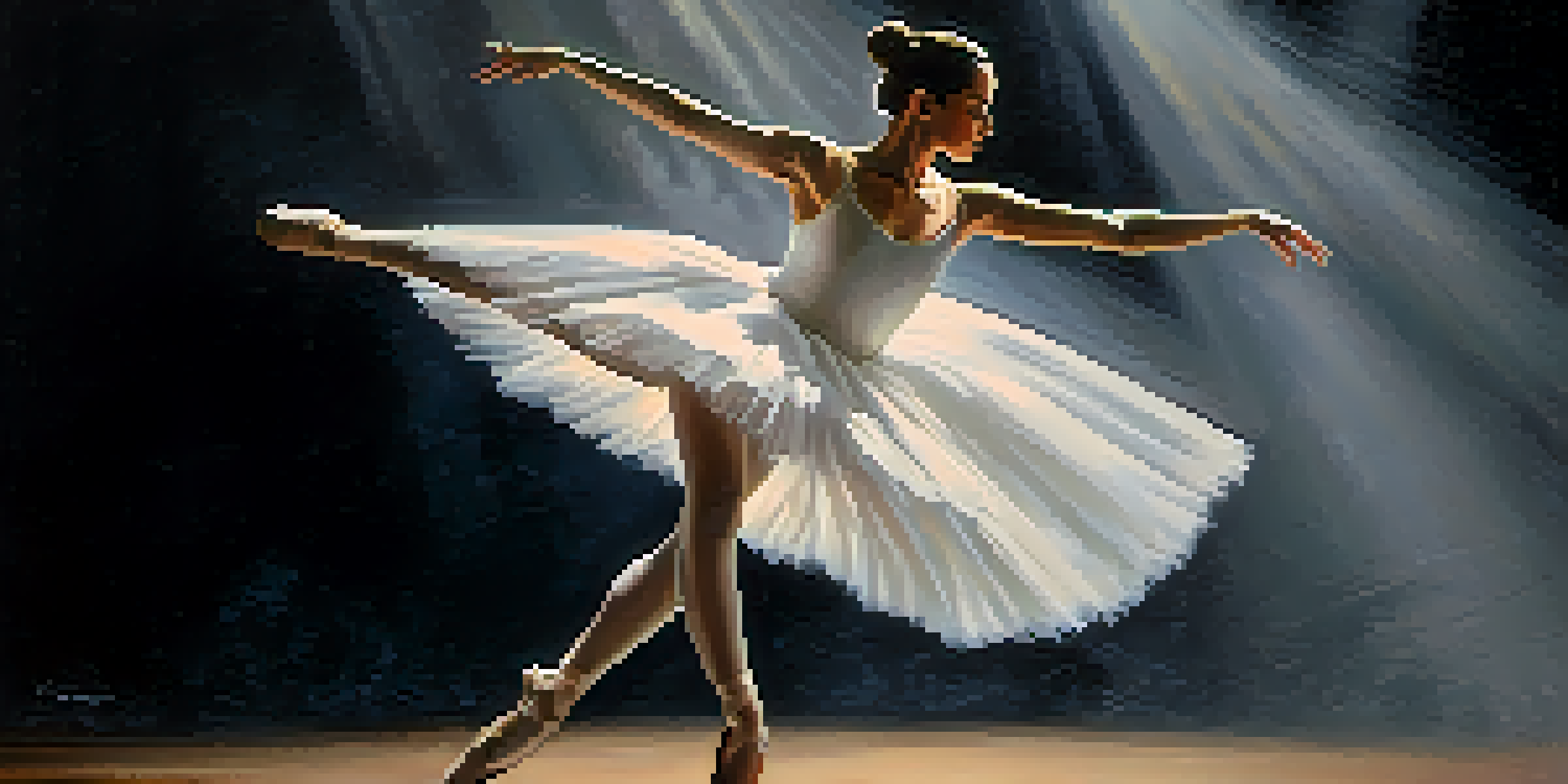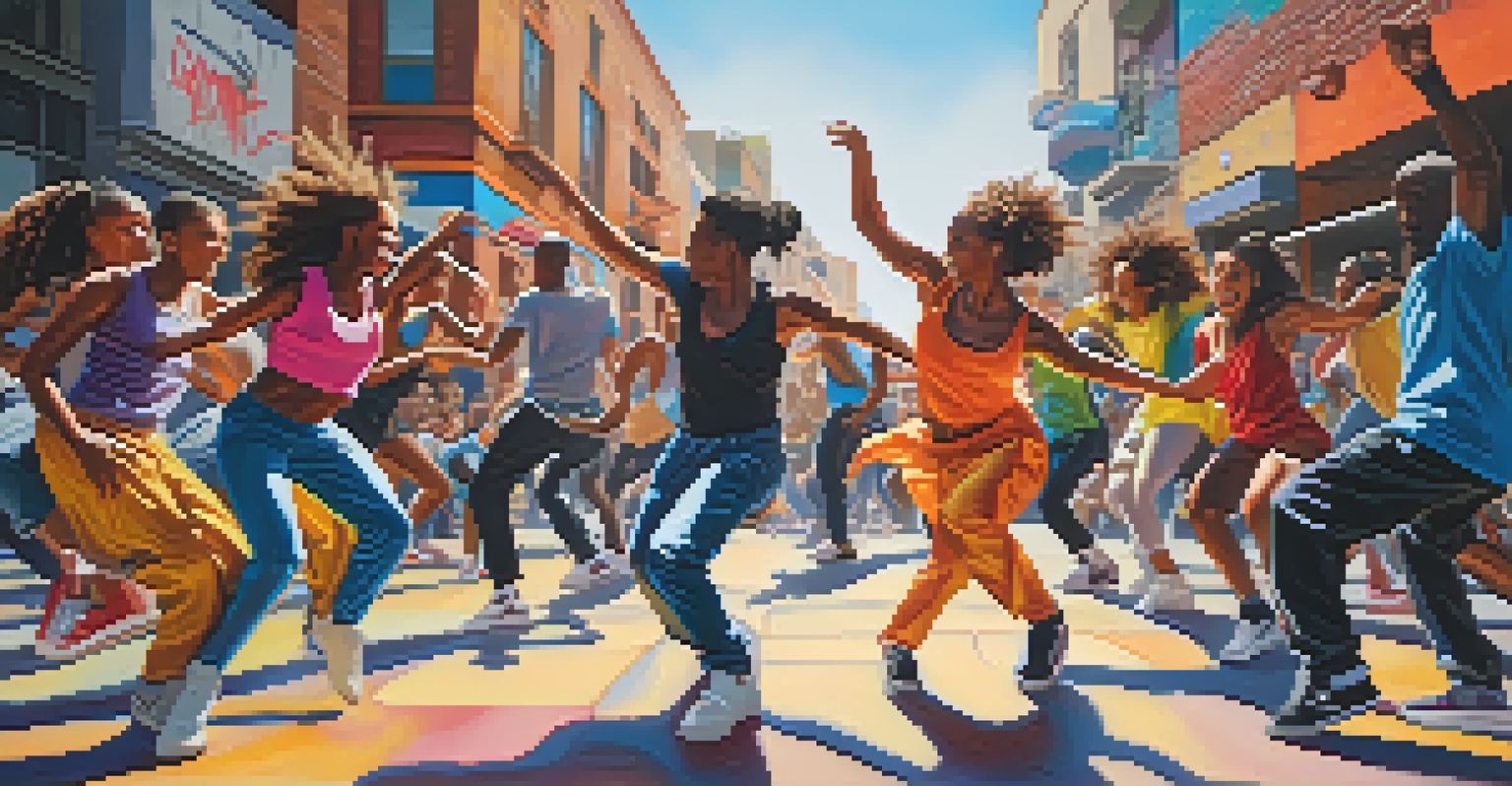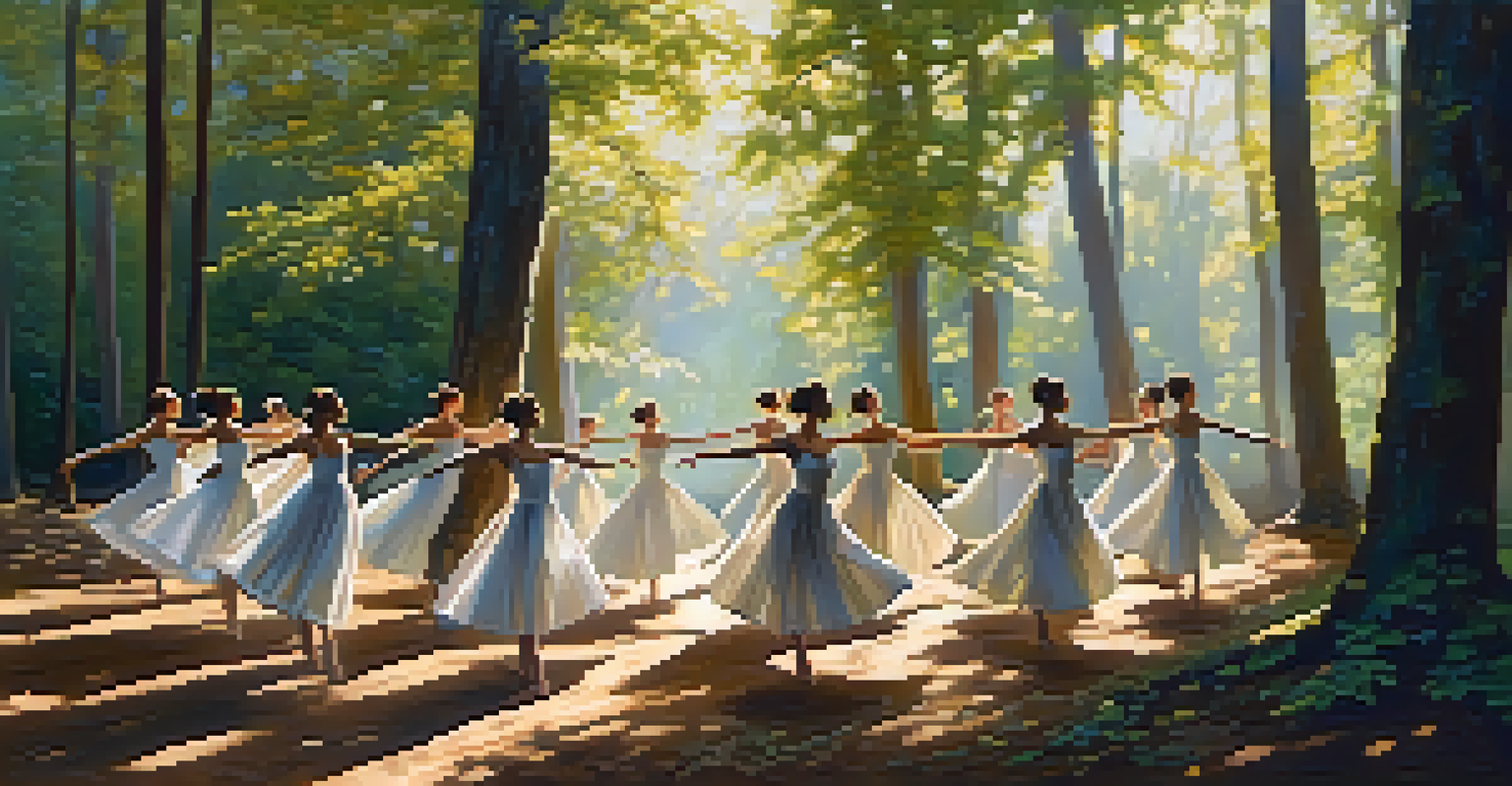Dance and Emotion: How Movement Tells Stories in Film

The Art of Dance as a Storytelling Medium
Dance is a powerful form of expression that transcends words. In film, choreographed movement can evoke emotions that dialogue often cannot. Think of iconic scenes, like the ballet in 'Black Swan,' where every pirouette tells a story of struggle and ambition.
Dance is the hidden language of the soul.
Through dance, filmmakers can convey complex emotional states, such as joy, sorrow, or tension, in a fluid and visceral manner. When characters dance, their movements reveal their inner thoughts and feelings, inviting the audience to connect on a deeper level. It's a language of its own, rich with nuance and interpretation.
Moreover, dance can serve as a crucial narrative device, advancing the plot or deepening character development. For instance, in 'La La Land,' the opening number sets the tone for the entire film, blending romance and aspiration in a way that words alone could not.
Historical Context: Dance in Early Cinema
Dance has been a part of cinema since its inception, with silent films often relying on physical movement to convey emotion. Stars like Charlie Chaplin and Buster Keaton used their bodies to tell stories, showcasing how movement can carry significant meaning even without dialogue.

As technology advanced, so did the complexity of dance in film. The introduction of sound allowed musicals to flourish, with iconic numbers becoming essential storytelling tools. Movies like 'Singin' in the Rain' exemplify how dance sequences can encapsulate emotions and themes in a visually stunning way.
Dance: A Unique Storytelling Tool
Dance transcends language, allowing filmmakers to convey complex emotions and narratives in a visceral manner.
This evolution highlights how filmmakers have continually harnessed dance as a narrative element, creating memorable moments that resonate with audiences. The marriage of choreography and cinematography has opened new avenues for storytelling, making dance an integral part of the film landscape.
Choreography: The Heartbeat of Film Dance
At the core of dance in film lies choreography, the art of designing sequences of movements. Choreographers work closely with directors to ensure that every step, turn, and leap aligns with the film's emotional tone and narrative. This collaboration is crucial, as the choreography must not only look beautiful but also serve the story.
The dance is a poem of which each movement is a word.
A great example is the work of Bob Fosse, whose distinctive style brought a raw, sensual energy to films like 'Cabaret.' His choreography isn't just about movement; it reflects the characters' desires and conflicts, making every dance sequence a vital part of the storytelling.
Effective choreography can transform a simple scene into a powerful moment that captivates audiences. By integrating dance into the narrative, filmmakers create a richer, more immersive experience that resonates long after the credits roll.
Emotional Resonance: Dance and Audience Connection
Dance has a unique ability to evoke emotions, making it a powerful tool for filmmakers. When characters dance, viewers often feel their joy, pain, or longing, creating an emotional connection that pulls them into the story. This connection can be so profound that audiences may find themselves reflecting on their own experiences.
For instance, in 'Dirty Dancing,' the climactic dance scene between Baby and Johnny is infused with tension and desire. Their movements express unspoken feelings, drawing the audience into their world. This emotional resonance is what makes dance in film so compelling and unforgettable.
Choreography Drives Film Emotion
The collaboration between choreographers and directors ensures that dance sequences enhance the emotional tone and narrative of a film.
Ultimately, the ability of dance to convey emotion is what sets it apart as a storytelling medium. It transcends language and cultural barriers, allowing for a universal understanding of the human experience that unites audiences around the globe.
Iconic Dance Scenes: Moments That Define Films
Throughout cinematic history, certain dance scenes have become iconic, often defining the films themselves. Think of the 'time warp' dance from 'The Rocky Horror Picture Show' or the joyful 'Dancing in the Rain' sequence in 'Singin' in the Rain.' These moments are not just entertaining; they encapsulate the essence of the films they belong to.
These memorable scenes serve as cultural touchstones, often referenced and celebrated long after their initial release. They showcase how dance can blend seamlessly with storytelling, enhancing the emotional impact and leaving a lasting impression on viewers.
Moreover, iconic dance sequences often inspire future generations of filmmakers and dancers alike. Their influence can be seen in contemporary films and stage productions, proving that the power of movement in storytelling continues to thrive.
Cultural Significance: Dance Across Genres
Dance is not confined to any single genre; it flourishes across a variety of film types, from musicals to dramas to animated films. Each genre uses dance differently, reflecting cultural narratives and socio-political themes. For instance, hip-hop dance in films like 'Step Up' showcases urban culture and the struggles of youth, while classical ballet in 'The Turning Point' explores the sacrifices of a dancer's career.
By incorporating dance into various genres, filmmakers can explore diverse narratives and perspectives, enriching the storytelling experience. This diversity allows audiences to see their own stories reflected in the movement, fostering a sense of connection and understanding.
Cultural Reflections Through Dance
Dance across various genres enriches storytelling by reflecting diverse cultural narratives and universal human experiences.
As a result, dance becomes a vehicle for cultural expression, bridging gaps between different communities and highlighting the universal themes of love, loss, and resilience. It reminds us that, despite our differences, we all share a common human experience.
The Future of Dance in Film: Innovations and Trends
As technology evolves, so too does the role of dance in film. The rise of digital effects and CGI has introduced new possibilities for choreography, allowing filmmakers to create visually stunning dance sequences that were once unimaginable. This innovation opens up exciting avenues for storytelling, blending the real with the fantastical.
Moreover, the growing popularity of dance-based reality shows has influenced how dance is portrayed in films. Audiences are more engaged than ever, thanks to platforms that celebrate dance and showcase diverse styles. Filmmakers are responding by incorporating fresh, modern choreography that resonates with today's viewers.

Looking ahead, we can expect to see even more experimentation with dance in film, with an emphasis on inclusivity and representation. As filmmakers continue to push boundaries and explore new narratives through movement, dance will undoubtedly remain a vital and dynamic component of storytelling in cinema.